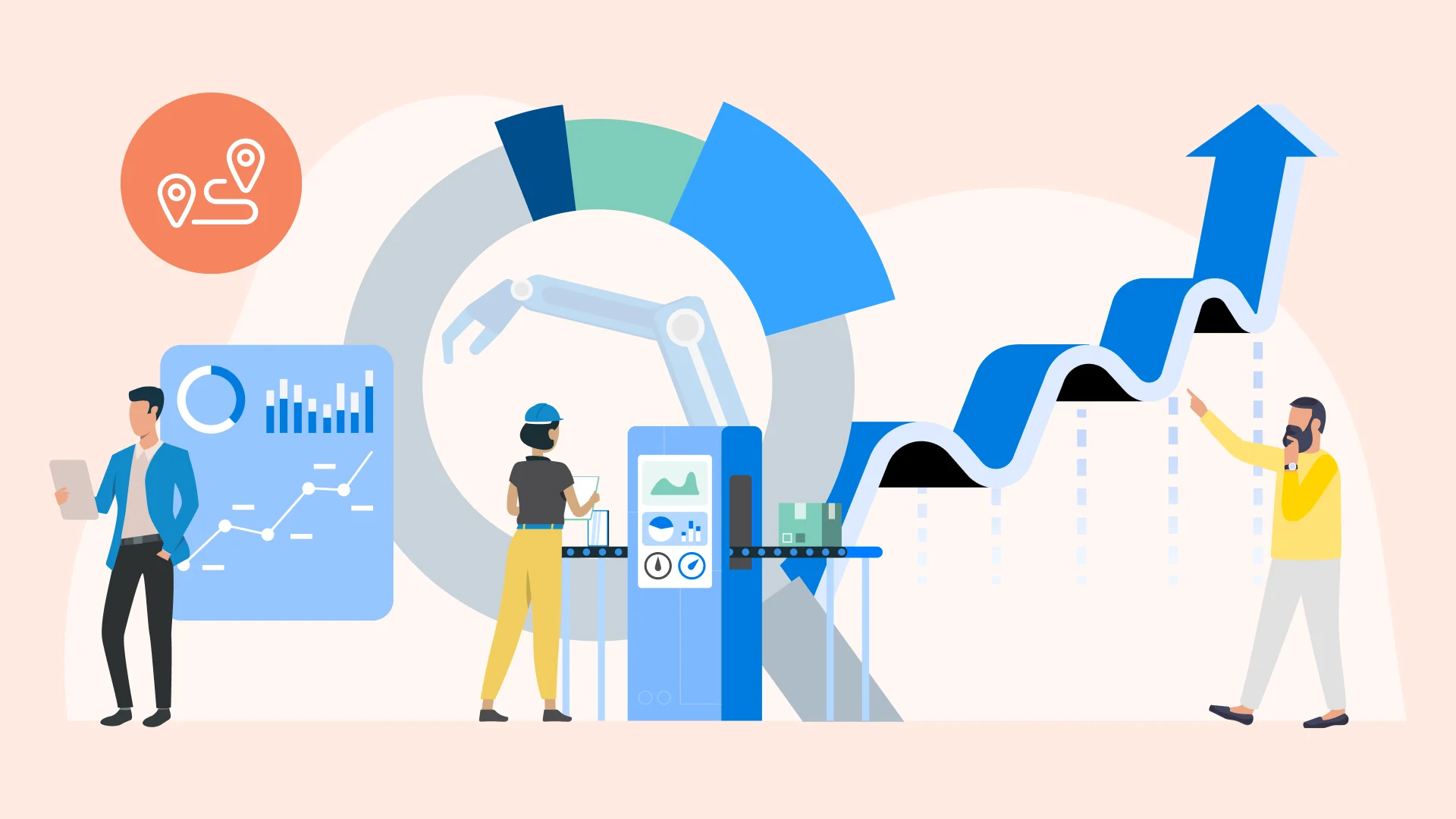
The digital economy creates infeasible pressures on businesses to adapt within four walls. Today, growth, efficiency, and customer satisfaction become impossible with traditional models. Enter digital transformation — an all-encompassing transition in how businesses function, create value, and gain a competitive edge in today’s world. But winning isn’t just about adopting new technology. It calls for a carefully crafted digital transformation strategy bolstered by key ingredients that drive innovation and sustainability.
In this blog, we will discuss the 9 key elements of a digital transformation strategy, their connection with business goals, their importance as building blocks for digital success, and other pertinent details.
What Is a Digital Transformation Strategy?
A digital transformation strategy is a comprehensive plan to use digital technologies to accelerate business processes and enhance the customer experience, as well as the culture in your organization. Machine Learning and Cloud Computing focus on leveraging technologies like artificial intelligence (AI), cloud computing, Internet of Things (IoT), data analytics, and automation in key business processes to enhance agility, efficiency, and innovation.
A digital strategy, as opposed to ad-hoc IT upgrades, aligns all initiatives with business objectives. The trifecta that connects technology spend to business impact for sustainable growth.
Why a Digital Transformation Strategy Matters
Digital transformation is not just staying trending — it’s about staying ahead. For example, according to a report by McKinsey, organizations that put effective digital strategies in place are 2.7 times more likely to report successful transformations than those that don’t. Here’s why it matters:
- Innovation is a source of competitive advantage
- Improved customer experience and personalization
- Improved operational efficiency and cost reduction
- Growth at scale and business agility
- Data-driven decision making
9 Core Components Of Digital Transformation Strategy
1. Clear Vision and Leadership Commitment
Executive sponsorship and a clear vision are the bedrock of any digital transformation. Leadership needs to know why transformation is a priority and bring to the table a big and clear long-term vision that is attractive for all involved parties.
- Communicate transformation purpose across the organization
- Designate leaders to track strategy execution
- Set transformation goals in line with business KPIs
2. Customer-Centric Mindset
A customer-first approach means building digital experiences that are intuitive, personalized, and responsive. Businesses must leverage technology across the board—from predictive analytics to omnichannels—to match shifting needs and drive satisfaction.
- Use CRM and customer data platforms for personalization
- Deliver frictionless experiences across mobile, web, and in-store
- Utilize AI chatbots, feedback loops, and sentiment analysis to enhance CX
3. Agile and Scalable IT Infrastructure
A cloud-native and scalable IT environment allows for faster deployments, improved integrations, and real-time data access. Enterprises must evolve from monolithic to microservices, cloud-native applications, and DevOps pipelines.
- Cloud computing: AWS, Azure, GCP
- System integration APIs and middleware
- Containerization (Docker, Kubernetes) and edge computing
4. Data-Driven Decision Making
Data is the new oil — but only when it’s refined. Useful insights come from proper data handling, analytics, and visualization using tools like BI dashboards and real-time analytics.
- Invest in data governance frameworks
- Implement real-time dashboards with KPIs
- Use predictive analytics with machine learning
5. Automation and Process Optimization
RPA, workflow automation, and AI bots are revolutionizing how businesses perform repetitive tasks, reducing costs and improving efficiency.
- Automated invoice processing
- Chatbots for customer service
- AI-based recruiting platforms
6. Cloud-First Approach and IT Modernization
A cloud-first strategy ensures flexibility, innovation acceleration, and improved disaster recovery. Hybrid and multi-cloud environments modernize IT infrastructure and prevent vendor lock-in.
Security Tip: Always include IAM, encryption, and real-time monitoring.
7. Strengthening Cybersecurity and Compliance
Cybersecurity must be embedded in the transformation roadmap. Zero-trust architecture, MFA, and regular testing are essential for digital safety and regulatory compliance.
- Regularly conduct risk assessments
- Secure data in transit and storage
- Use SIEM tools for 24/7 monitoring
- Train employees on cyber hygiene
8. Cultivating Innovation and Agility
Agile frameworks like DevOps, Scrum, or Kanban enable rapid delivery, customer-focused development, and innovation-friendly environments like labs or fail-fast setups.
Pro Tip: Empower teams with innovation labs to test ideas quickly without fear of failure.
9. Measuring ROI and Continuous Improvement
Tie digital efforts to measurable KPIs. Use dashboards and analytics tools to track transformation performance and refine strategies based on real-time data.
- Customer acquisition and retention rates
- Employee productivity levels
- Operational cost savings
- Time-to-market for new products
Measuring the Success of Your Digital Transformation
Track relevant KPIs to evaluate the impact of your transformation efforts and pivot when needed.
- Customer satisfaction (CSAT/NPS)
- Enhancements in operational efficiency
- Time-to-market of new products/services
- Employee engagement and digital adoption
- Revenue from digital channels
Building a Transformation Roadmap
- Assess current digital maturity
- Identify priority initiatives
- Map out quick wins and long-term goals
- Allocate resources and budget
- Review and iterate quarterly
Pilot programs, MVPs, and iterative feedback loops help reduce risk and build momentum.
Role of Leadership and Change Management
Transformation must be championed from the top. A digital transformation office (DTO) can guide execution and ensure cross-functional alignment.
- Communicate the vision regularly
- Train teams on digital literacy
- Recognize innovation and early adoption
- Model behavior from the top down
Technology Partners and Ecosystem Strategy
Right technology partners bring innovation, scalability, and experience. A healthy digital ecosystem fosters faster outcomes and business resilience.
- Cloud providers (AWS, Azure, GCP)
- CRM, ERP, and collaboration platforms
- DevOps, automation, and monitoring tools
- Experienced IT consulting partners
Final Thoughts
Digital transformation is a must for survival in today’s economy. But it needs vision, strategy, and execution. The 9 components discussed — leadership, customer-centricity, agile IT, data, cloud, security, innovation, automation, and ROI measurement — form the foundation of a successful transformation plan.
Ready to Transform Your Business? Partner with NextGenSoft
At NextGenSoft, we enable enterprises to leverage and execute a good digital transformation strategy. Whether you’re migrating to the cloud, automating DevOps, integrating AI, or optimizing your business, our experts ensure your journey is seamless, secure, and delivers lasting ROI.
Let’s shape your digital future—contact us today for a free consultation.



